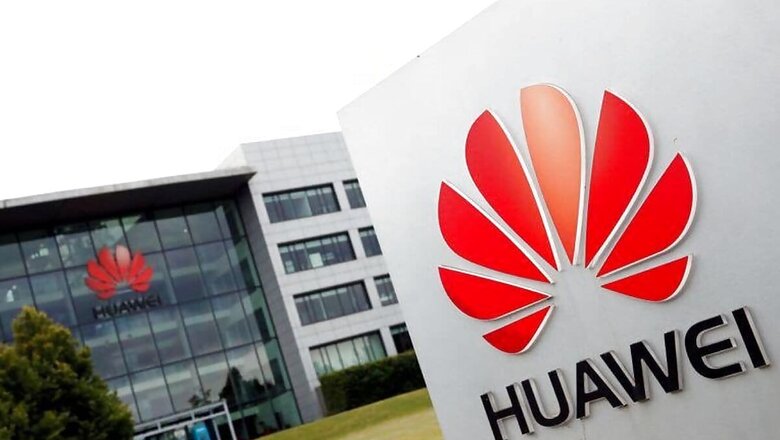
views
A recent report revealed that Auto sales in China fell 12.4% in June as a global shortage of semiconductors hit autos production in the world’s biggest car market. This has been a trend globally, with automakers around the world have had to adjust assembly lines due to the auto-chip shortage. While this shortage is a discussion for some other day, what it has done is put a humble coin sized chip at the front of very mechanical business like automotive. No automaker can think of a new car without integrating semiconductors, and much world-renowned maker of Semiconductors is Huawei. We discuss the brand’s journey, innovations, and vision in the auto sector with Standy Nie, President, Enterprise Business, Huawei India.
Q.Tell us about Huawei’s journey into Auto sector
As electric vehicles become more intelligent, the automotive industry is relying more on ICT technologies such as AI, digital power, and cloud services. Huawei has long worked towards fulfilling these digitisation needs of the transportation industry. Huawei started its vehicle-related research in 2012 by setting-up an Internet of Vehicles Laboratory (IoV Lab) dedicated to researching technologies for electric vehicles, as there was no concept of intelligent vehicles and autonomous driving in the industry at that point in time.
In May 2019, Huawei officially established the Intelligent Automotive Solution (IAS) Business Unit (BU), not to make cars but to bring its 30-plus years of ICT expertise in devices, networks, and cloud to the automotive industry to drive the transition from internal combustion vehicles to intelligent connected vehicles.
In October 2020, Huawei launched the “Huawei Inside" (HI) initiative. When consumers see the HI logo, they will know that most of the electronics in a car’s main autonomous vehicle systems have been made by Huawei. As part of HI, Huawei closely works with OEMs to build digital architecture for premium intelligent vehicles, offering five intelligent solutions in Intelligent Driving, Intelligent Cockpit, mPower, Intelligent Connectivity, and Intelligent Vehicle Cloud, and over 30 intelligent components.
Huawei has invested more than US$1 billion in the R&D of intelligent automotive components this year and has 5,000 people working on the IAS BU with this number set to increase. Huawei is also planning to establish more than 10 R&D centers in Japan, Germany, and other countries to support relevant R&D effort.
Q.Tell us about technology you are making for automakers?
Huawei doesn’t make cars, but by focusing on its 30-plus years of experience and legacy of developing ICT technologies, Huawei is committed to providing new auto parts that will help automakers build better intelligent vehicles. Our offerings currently include intelligent, digital vehicle platforms and more than 30 intelligent vehicle components across five major solutions that cover intelligent driving, intelligent cockpits, intelligent connectivity, mPower, and intelligent vehicle cloud services.
i. E-cockpit based on HarmonyOS: Huawei’s HI e-cockpit solution utilises its in-house computing platform and HarmonyOS for a rich user experience offering equipped with features such as the Augmented Reality Head-Up Display (AR-HUD) that turns the windshield into a 70-inch HD screen with 7.1 surround sound for movies, games, and video conferences. E-cockpit features also include powerful visual recognition, semantic understanding, and AI technologies to deliver intelligent services by communicating with users in natural language and recognizing gestures and facial expressions.
ii. Intelligent driving computing platform: Huawei’s MDC 810 represents the pinnacle of computing power, reaching 400 TeraOPS (trillion operations per second) thus supporting operation and running of a host of services and applications enabling higher autonomous driving
iii. 4D imaging radar: Most radars work to only support measurements of speed and distance. With Huawei’s 4D imaging radar produces superior maps with 3D shapes of surrounding objects, unlike conventional radars that only create maps with messy lines.
iv. HUAWEI Octopus: It is an open autonomous driving platform that focuses on four key elements of autonomous driving development: hardware, data, algorithms, and HD maps. It supports virtual testing with massive amounts of data at reduced cost that help developers more rapidly develop autonomous driving products and work together to explore today’s new age of intelligent connected vehicles.
Q.Tell us about Huawei’s self-driving technology?
Optical networks, cloud services, and communication capabilities are all necessary for the intelligent transformation of traditional automotive enterprises. Viewing intelligent automotive components as its long-term strategic opportunity, Huawei has launched a range of next-generation intelligent components and solutions, including the 4D imaging radar, AR-HUD, and MDC 810 for Intelligent Vehicles that together promise to deliver highly autonomous driving.
4D imaging radars will enable autonomous driving through its superior object detecting capability over a larger detection range, environment reconstruction, mapping, and localization, that will allow vehicles to enjoy a 360° surround view with full-coverage sensing of all objects in different scenarios under all weather conditions.
High-level autonomous driving functions such as Traffic Jam Pilot, Highway Pilot, and Auto Valet Parking can all be realised with the industry’s most powerful computing platform for intelligent driving – the MDC 810. The ARCFOX Alpha S sedan will be the first vehicle to feature HUAWEI MDC 810.
Massive data, HD map, and advanced algorithms come into play with HUAWEI Octopus that builds a data-driven, closed-loop platform for intelligent driving. Relying on its vehicle-cloud synergy, industry-leading annotation capacity, upgraded virtual simulation, and one-stop secure, compliant cloud services, HUAWEI Octopus is designed to help OEMs build autonomous driving development capabilities from scratch, lower development requirements, and improve development efficiency.
Q.Electric cars or self-driving cars, what are you focusing more on?
Huawei’s research into the automotive industry started in 2012, when we set up a lab under our research arm, 2012 Laboratories, to look into connected vehicles. Back then, the concepts of intelligent vehicles and autonomous driving were not well established. Our initial idea was to research the technologies needed for electric vehicles (EVs).
As our research continued, we saw that the automotive industry’s focus was shifting EVs to autonomous driving. At first, we planned simply to research electric charging, electric drive technology, and battery power management. But we gradually realized that we needed to develop a “driver" that one day would replace human drivers in the intelligent vehicles of the future. So going forward, Huawei’s technology will become increasingly vital for the systems and components used in autonomous cars.
Q.What future technologies are you working on?
The automotive industry has a long development cycle, as it takes several years from investing in a new car to its mass production. Huawei has invested more than US$1 billion in the R&D of intelligent automotive components this year. We will continue to invest more in Intelligent Driving and Intelligent Cockpit solutions, using ICT technologies to help car OEMs build better intelligent vehicles focusing on intelligent driving, e-cockpit, intelligent electrification, connectivity, and intelligent automobile cloud.
We are actively working with several eco-system partners and car OEMs on a range of technologies that will enable L4 level of autonomous driving, i.e. vehicles that almost does not require any human interaction in its operation. The endeavour is to package complexity into solutions and offer simplicity to automotive companies and partners.
Q.Do you think 5G technology will help autonomous cars?
5G will enable a fully connected world, and the automotive industry will be amongst those that will move leaps and bounds to realise its potential on the back of 5G enable networks with ultra-low latency, ultra-high bandwidth, and reliability. In the next ten or so years, we will likely see driverless cars as another game changer. The main application scenarios of 5G among autonomous cars will include tele-operated driving (TOD), high-density vehicle platooning, and rapid and coordinated lane-change assistance. It will also be used in the future to complement autonomous vehicles such as taxis or shared car services, with vehicles remotely driven and coordinated. Huawei is working with its partners around the world to accelerate the arrival of autonomous driving based on 5G.
Q.What differentiates Huawei from other tech companies?
Optical networks, cloud services, and communication capabilities are all necessary for the intelligent transformation of traditional automotive enterprises. For example, autonomous driving vehicles rely on computing and cloud services to identify red or green lights, or trees or poles in their path. As an ICT provider, these are exactly the fields where Huawei’s expertise lies.
Huawei’s IAS BU has mature capabilities in developing full-stack ICT systems for the B2B market which can help carmakers quickly launch new services and integrate capabilities to meet customer requirements. This can greatly shorten the R&D cycle for new vehicles. Another of Huawei’s strengths is its strong ability to understand user requirements and its experience in design for the B2C market will help carmakers keep consumers up-to-date with the latest trends.
Furthermore, Huawei also implements a “platform + ecosystem" strategy, managing on its own the complexity of both software and hardware and making its capabilities available to others to ensure safety and reliability and helping ecosystem partners grow.
Read all the Latest News, Breaking News and Coronavirus News here.

















Comments
0 comment